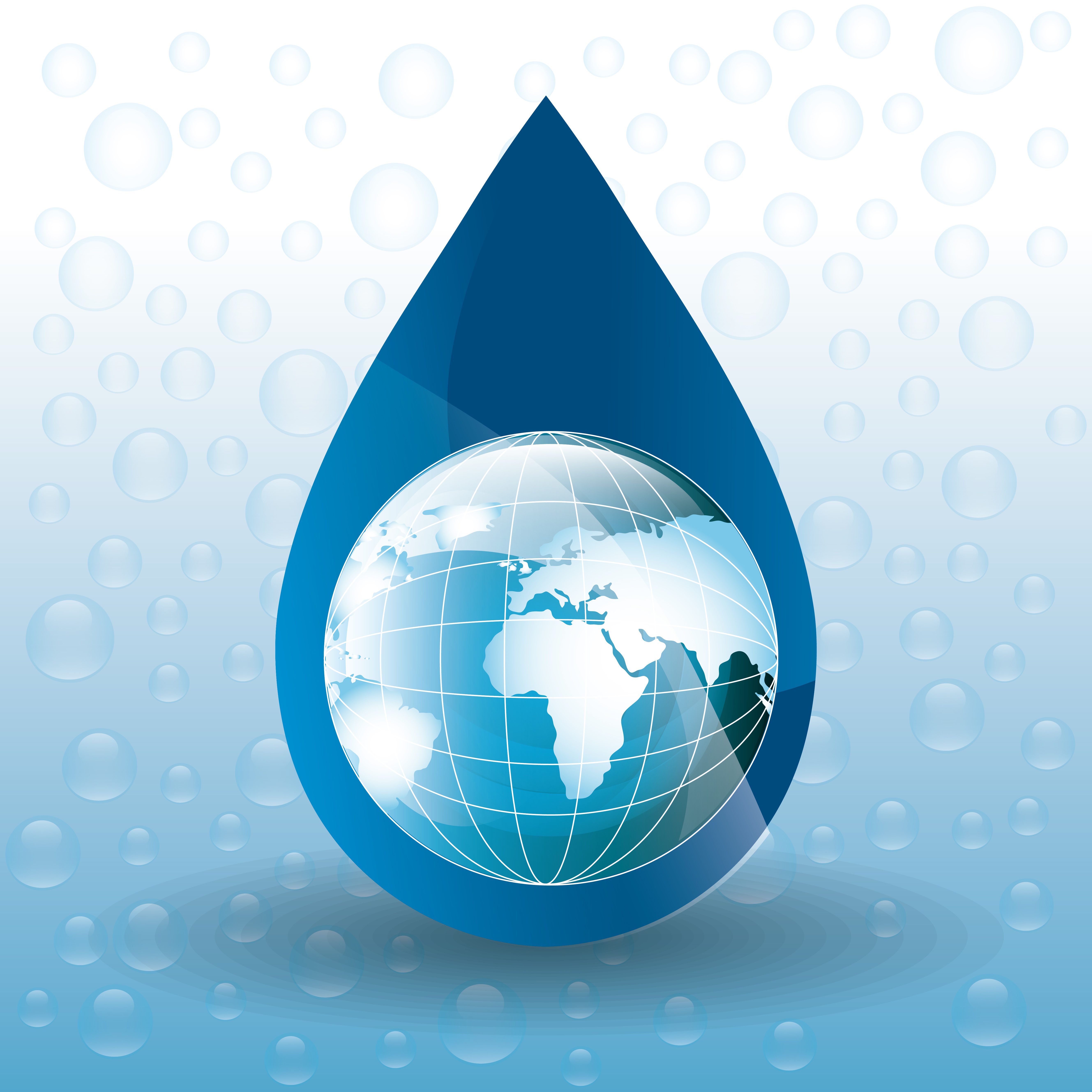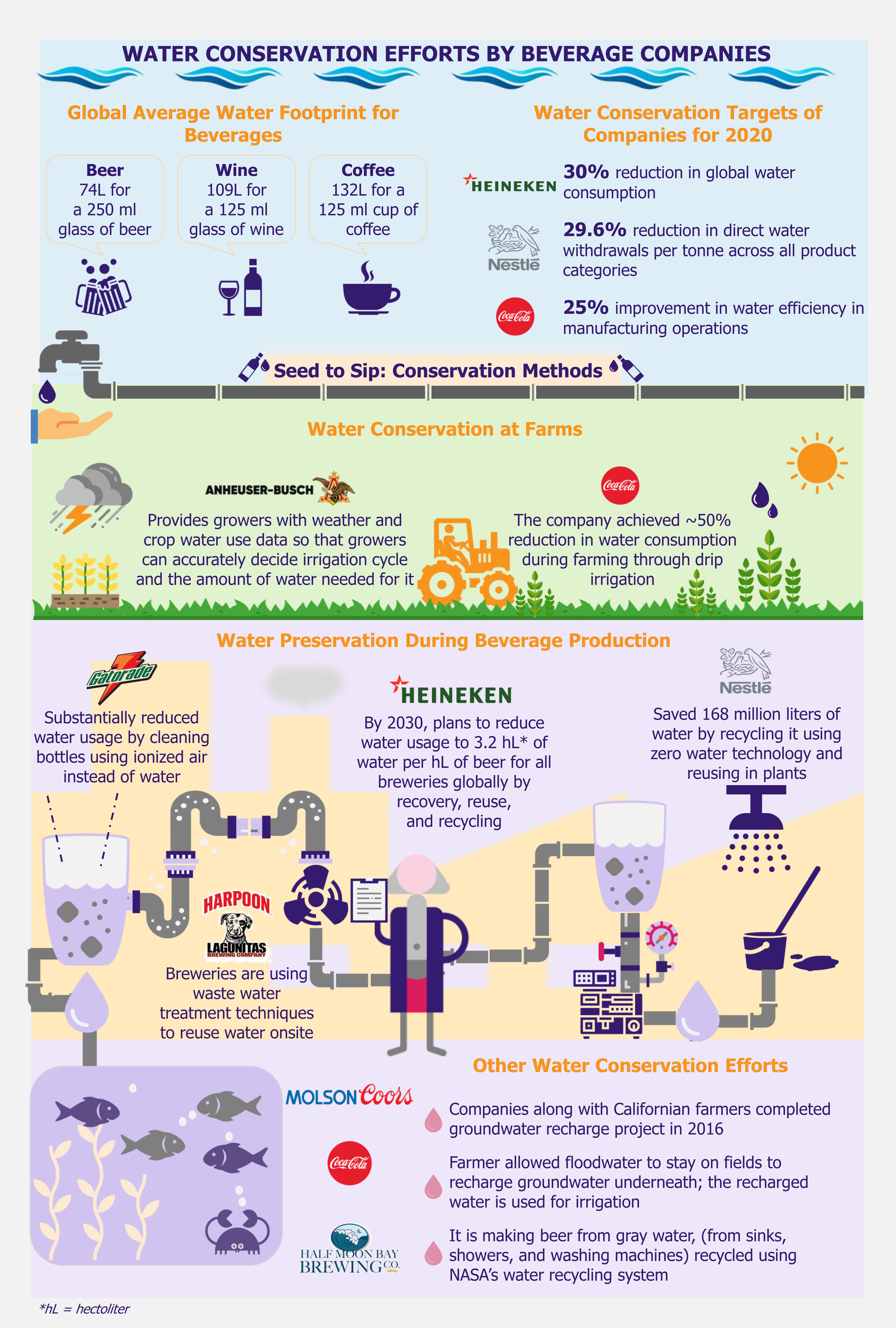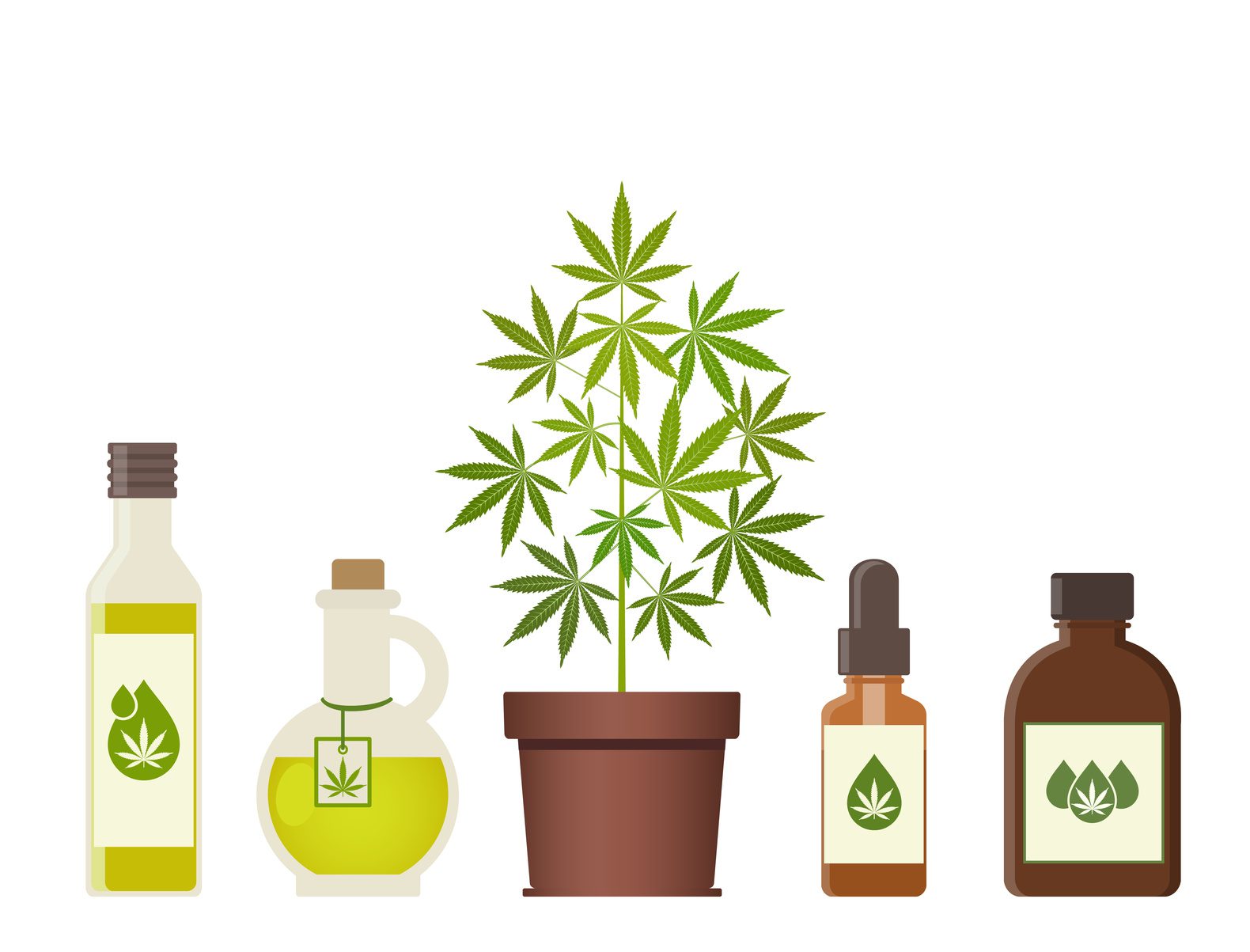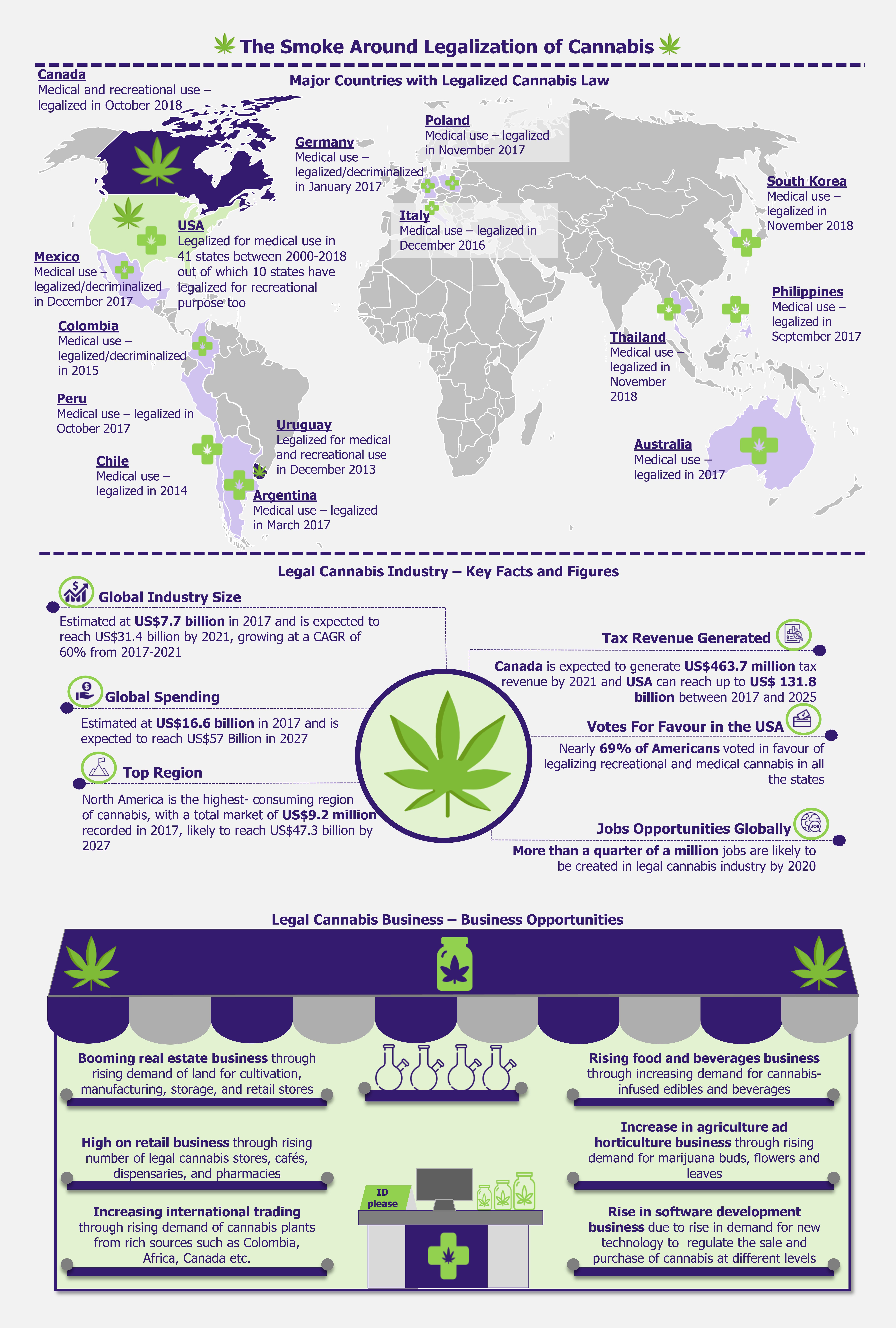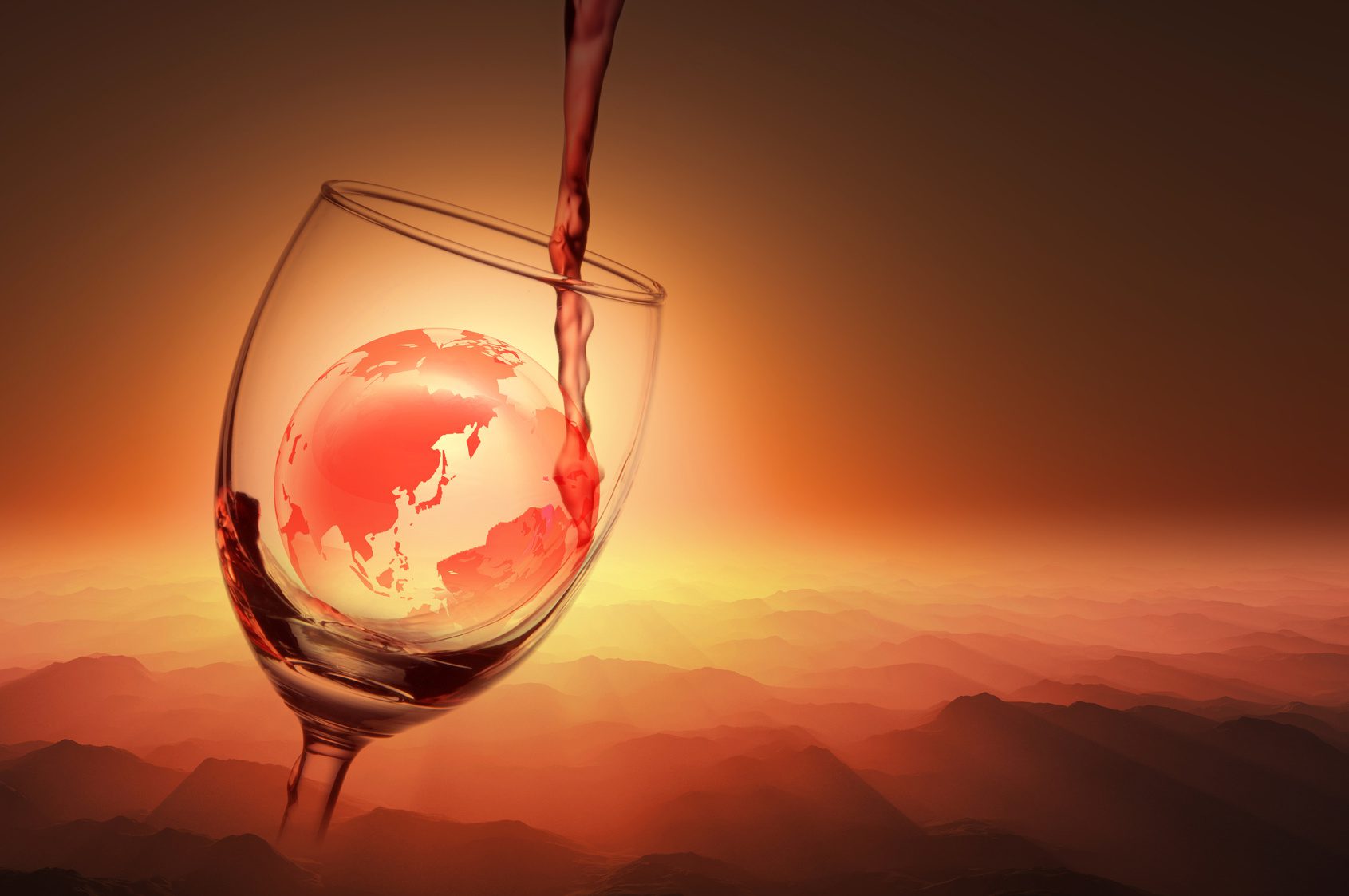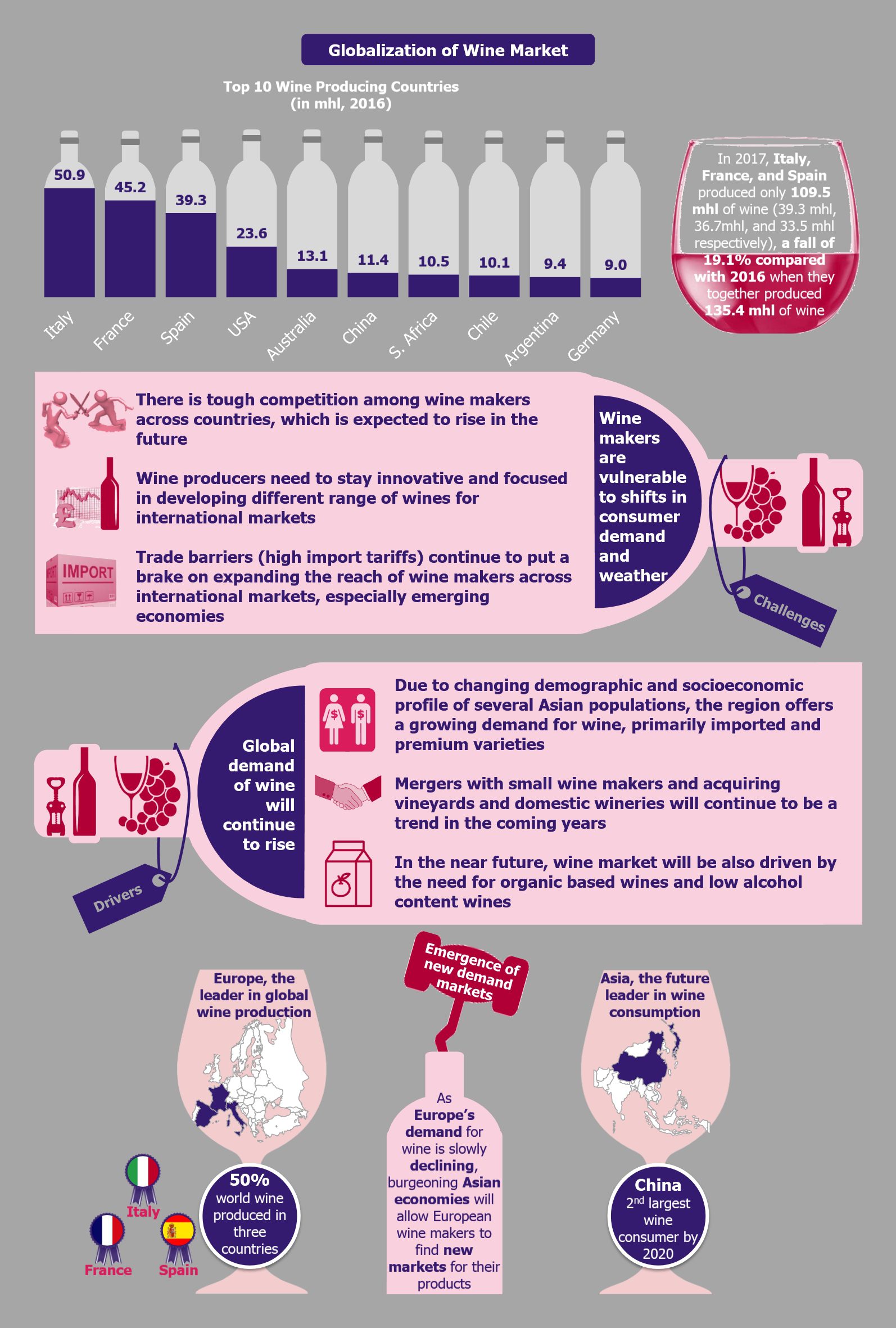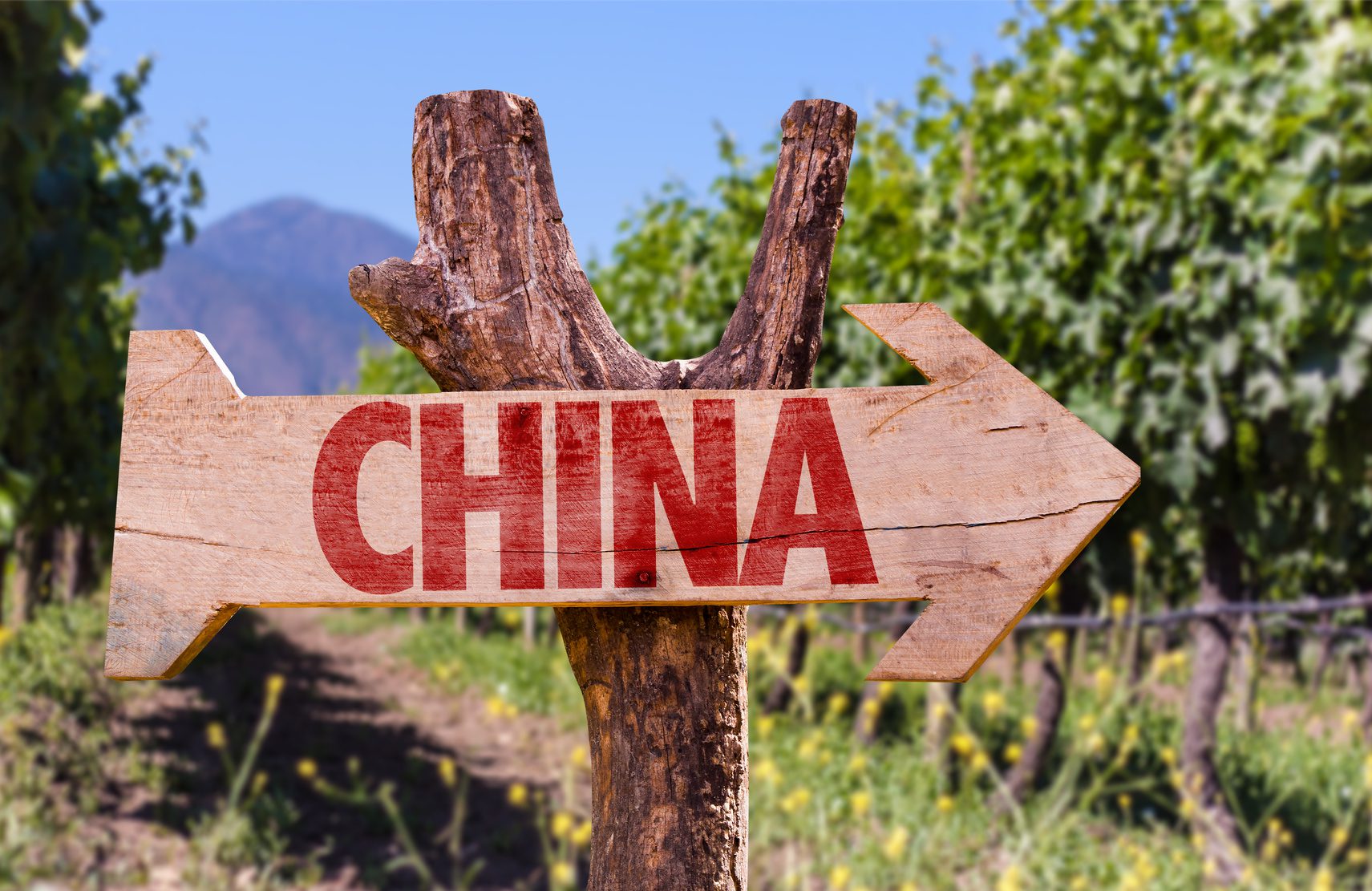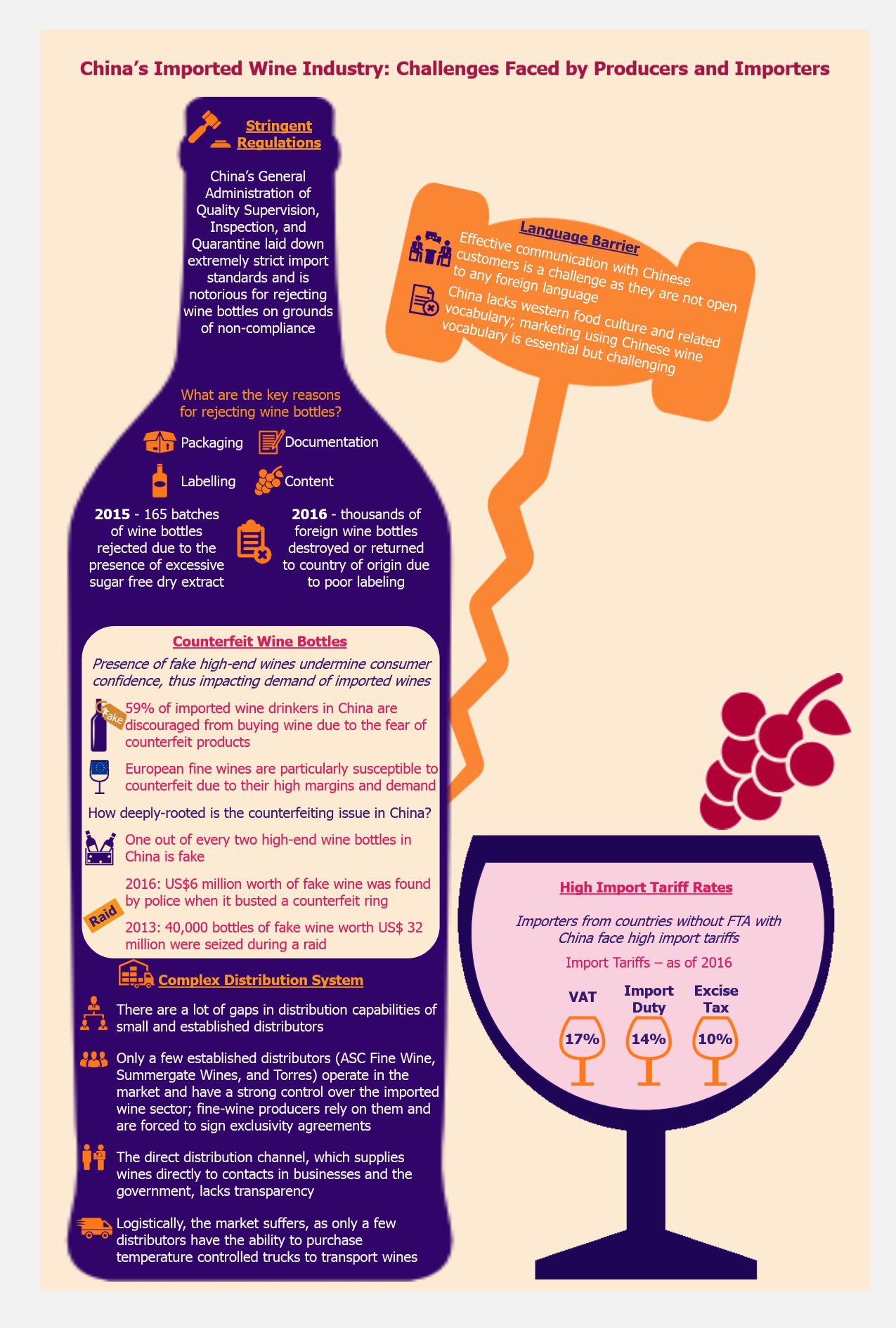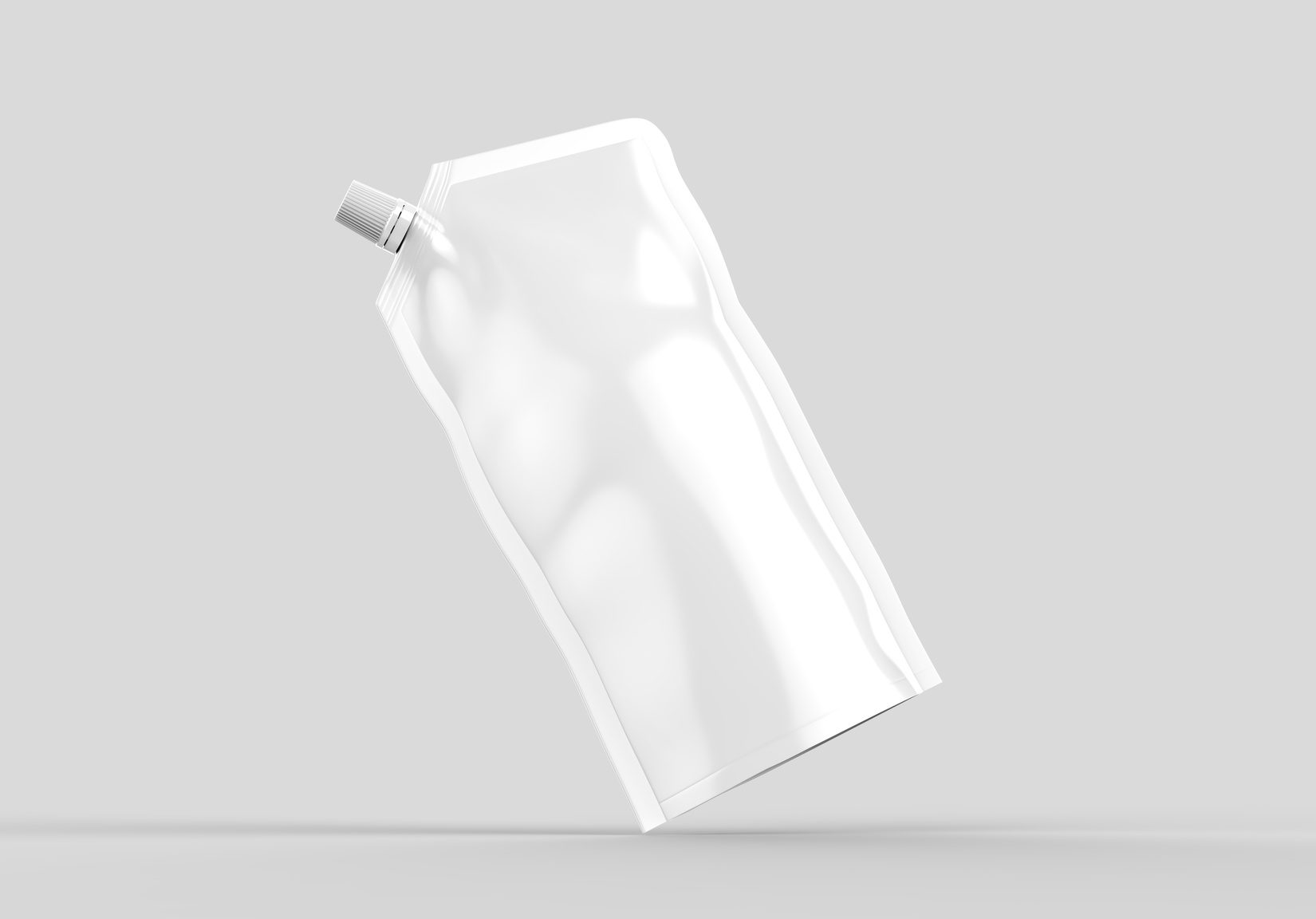Water is a finite resource, which is becoming constrained with the growing population and climate change. It is a vital component in production of beverages, both alcoholic and non-alcoholic. From growing raw materials (such as wheat or barley) for beverages, through product development, till the production process, water is indispensable at each step. The beverage industry has come to realize that water scarcity could tremendously impact businesses, forcing them to reassess water management strategies and tap into efficient conservation measures.
Water covers around 70% of the earth’s surface and only 3% is available as freshwater, which can be used for various commercial and non-commercial activities. Unfortunately, this quantity of water is inadequate for growing population and thriving businesses using this resource without considering its limited availability. According to WWF, an international NGO for preservation of wilderness and nature, two-thirds of the world’s population may face water shortage by 2025, with demand for water exceeding supply by 40% by 2030.
Beverage production is highly water-intensive, with water being used at each step across the value chain. According to Water Footprint Network, it takes at least 70 liters of water to produce 0.5 liter of soda, 74 liters of water for a glass of 0.25 liter of beer, and 132 liters of water for a cup of 0.125 liter of coffee. Water footprint for beverage companies is evidently high, and this can be mitigated by implementing water management technologies across the value chain, from farming to beverage production.
Water scarcity posing challenges for beverage producers
Water stress is a pressing problem for all beverage industry players, causing various operational challenges that are impacting business operations.
Opposition to water extraction from natural resources
California suffered a searing seven year drought that ended in 2017. Distress from water scarcity impacted communities, as well as companies operating in the region. For instance, Nestlé, a Swiss multinational food and beverage company, faced opposition from local communities and criticism from conservationists for extracting large quantities of water from Californian springs even during the drought-stricken years.
These events impacted Nestlé’s operations and eventually, succumbing to the pressure, Nestlé invested US$7 million in conservation projects across five of its bottling plants in California in 2017. The projects focused primarily on reducing the amount of water used in filtration process while simultaneously maintaining hygiene of the processing plant. Only after consistent water conservation efforts, Nestlé was granted a three-year permit by US Forest Service in 2018 to extract water within the limit of 8.5 million gallons annually from Californian springs.
Similarly to Nestlé, Coca-Cola faced opposition from local communities in India resulting in closures of two of its bottling plants located in the states of Kerala (in 2004) and Uttar Pradesh (in 2014), due to extensive water extraction from local resources. In order to sustain operations, Coca-Cola announced plans to invest about US$5 billion between 2012 and 2020 to help replenish groundwater in India, allowing the company to also use water for beverage production.
Water shortage impacting business operations
According to global survey of 600 companies by Carbon Disclosure Project (CDP), water scarcity and stricter environmental regulations cost businesses around US$14 billion in 2016. Many companies agreed that water-related issues have affected their businesses directly or indirectly.
For instance, severe droughts in Southeast Brazil in 2014 and 2015 disrupted water supply in the area, limiting production capacity and disturbing operations of Danone, a French multinational food and beverage corporation. As a result the company suffered sales loss of ~US$6 million in 2015.
Not only Danone was affected. As Brazil is one of the world’s leading coffee producers, limited availability of water for irrigation due to the drought, crop production in the region took a hit. Eventually, the situation threatened supply, which led to higher raw material prices for coffee manufacturers. One of the producers that felt the repercussions was J.M. Smucker, an American producer of food and beverages, reported a net loss of US$90.3 million in 2015 due to higher coffee bean prices in Brazil.
Tapping into innovations to reduce water consumption
Water risk for beverage companies highly depends on external factors, such as water quality and availability either through natural resources or municipal bodies. Industry players have very little control over the external factors but can regulate water usage in their internal manufacturing operations to reduce consumption.
Recycling water using zero water technology
Beverage companies are collaborating with technology providers to incorporate innovative water recycling methods.
For instance, in 2014, Nestlé collaborated with Veolia Group (a French company providing water, waste, and energy management solutions) and GEA Group (a German food processing technology firm), to introduce Cero Agua (zero water) technology across dairy production plant in Lagos de Moreno, Mexico. Using the technology, the factory does not have to rely on external water sources. Instead, it recycles and reuses the waste fluid extracted from milk – Nestlé extracts 1ml of water from every 1.6ml of milk. The treated water is used in non-food production applications such as cooling, irrigating the gardens, and cleaning, thus, eliminating the need to depend on external water sources. The company has invested around US$15 million to introduce zero water technology in the plant.
With the help of this technology Nestlé claims to have saved 168 million liters of water in the first year of implementation, reducing water consumption by more than 50%. Zero water technology has been rolled out across its other diary factories located in water-stressed areas of South Africa, India, China, to list a few.
Moreover, between 2004 and 2014, Nestlé claims it was able to reduce water consumption globally by one third and by 50% across its Mexican plants.
Onsite wastewater treatment
Brewing companies are not far from adopting technologies to reduce water footprint. Waste water treatment is one of the effective ways to reuse water and several brewing companies have jumped on the bandwagon to conserve water using this approach.
Since 2014, Lagunitas Brewing Company, a subsidiary of Heineken, has been using EcoVolt membrane bioreactor, a wastewater treatment technology that removes up to 90% pollutants from water so that it can be reused onsite for cleaning purposes. Using this solution, the company has reduced its water footprint by approximately 40%.
In 2016, Bear Republic Brewing Company, a brewery based in California, invested US$4 million in a waste water treatment system that uses electrically active microbes to purify wastewater, which helps the brewery to recycle about 25% of water that it uses to clean factory equipment.
Furthermore, in 2015, a Boston-based craft brewer, Harpoon Brewery, collaborated with Desalitech, a US-based water treatment company, to produce beer made from treated Charles River water. Desalitech uses its ReFlex Reverse Osmosis systems to purify the river water and has been able to recover 93% of the treated river water to brew beer.
Innovative farming techniques
Farming is highly water-intensive and sustainable beverage production can only be achieved if water consumption is cut down during farming. Hence, companies are employing various water management solutions to check water utilization during farming.
In 2014, Anheuser-Busch, an American brewing company installed six AgriMets, a network of agricultural weather stations, in Idaho to provide farmers with real-time weather and crop water use data. Using AgriMet data, growers can monitor rainfall and soil conditions, which helps them to cut down on the amount of water required in irrigation and decide when to irrigate. This ensures efficient use of water across the fields.
Further, for improving water management, the company is employing various seeding and harvesting techniques – for instance, it plants and harvests winter barley earlier in the year, resulting in 30% higher crop yield and 40% lower water usage.
PepsiCo and Coco-Cola have been promoting drip irrigation (a type of irrigation system where water is allowed to drip slowly to the roots minimizing evaporation) in water-scarce Indian states of Maharashtra, Gujarat, Karnataka, Haryana, among others. Coca-Cola started with drip irrigation project in 2008 with 27 farmers covering 13.5 hectares of agricultural land in India, which expanded to over 513 drip irrigation systems installed, stretching across 256.5 hectares of agricultural land by 2011. Drip irrigation leads to significant water conservation, with an average saving of 1200 kiloliter/ hectare of water for a cropping cycle of 110 days/hectare (an agricultural cycle comprising activities related to the growth and harvest of crops). Additionally, savings on account of electricity, fertilizers, and pesticides are estimated at about US$ 29/hectare/year.
EOS Perspective
For decades, water has been regarded as free commodity in processing and manufacturing environments, but this notion is beginning to change with growing awareness about water scarcity. Limited availability of water puts pressure on industrial activities and often pushes operational costs of beverage companies up. Availability of water is likely to get worse in the future, which could jeopardize operations of food and beverage companies unless the crisis is treated as a priority.
The solution to water scarcity lies in the hands of businesses as much as the governments of various countries. Water management requires stringent policies by the governments to better regulate the use of groundwater or natural resources for irrigation. The governments also need to implement efficient wastewater management and recycling technologies to conserve water. Countries such as Singapore have undertaken water recycling and management measures, but unfortunately such examples are relatively scarce in other parts of the world, with most conservation efforts being implemented only by large food and beverage companies. It is time that the governments as well as all industry players (including small-to-mid sized companies) wake up to the challenges that lie ahead owing to water stress.
Solutions to water scarcity do not always need to be expensive. Small-to-mid sized companies could start with small and inexpensive measures such as installing flow meters or leak detection systems, measuring water usage at each step and setting short and long term goals to reduce consumption across those processes.
Other measures could be to reduce water consumption across most water intensive processes, such as cleaning, which typically accounts for 60% of a beverage plant’s total water consumption. Water could be replaced with dry ice to manually wash equipment or it can be physically cleaned using vacuum systems or high-pressure hoses that can be used to move debris.
Nonetheless, sustainable water management efforts by large beverage companies have resulted in lowering of operational costs, improvement in quality of final products, and in building better brand perception among customers. These strategic advantages could motivate all industry players to reduce water footprint and play their part as responsible water users.




